
Sclerocactus glaucus f. cristata Photo by: Valentino Vallicelli
SB1479 forma cristata, Photo taken during the resting phase: the spines are all whitish.
Origin and Habitat: Garden origin (Nursery produced form)
Synonyms:
See all synonyms of Sclerocactus glaucus
Description: The typical Debeque form of Sclerocactus glaucusSN|13861]]SN|13861]] is a a ball cactus with a squat, ovoid or globular shaped green or powdery blue coloured stems. They have 8-15 ribs and the rib is sometime tuberculous 4--30 cm tall, 4-9 cm in diameter; Spines: (0 or) 1 to 3 generally characteristic unhooked central spines, the lower ones brown, the upper ones white 1-3 cm long,; 6 to 8 radials, 5 mm long. Some specimens lack central spines or have central spines which are hooked. Red nectar glands are found above each areole.
The crested form is very rare and nice.
Subspecies, varieties, forms and cultivars of plants belonging to the Sclerocactus glaucus group
 Sclerocactus franklinii J. W. Evans: is s local form of Sclerocactus glaucus, but not sufficiently distinct to deserve its own formal status. Distribution: Mesa and Delta County, Colorado.
Sclerocactus franklinii J. W. Evans: is s local form of Sclerocactus glaucus, but not sufficiently distinct to deserve its own formal status. Distribution: Mesa and Delta County, Colorado.- Sclerocactus glaucus (K.Schum.) L.D.Benson: Ball-shaped cactus, single or clumping. Stems green or powdery blue coloured 4 to 30 cm tall, 4 to 9 cm in diameter. Central spines unhooked, the lower ones brown, the upper ones white 1-3 cm long, 6 to 8 radials, 5 mm long. Flowersl purplish-red or pink.
 Sclerocactus glaucus '' Debeque form '' (K.Schum.) L.D.Benson: It has tall larger blue body with stiff spines. It grows in northern edge of distribution for this species.
Sclerocactus glaucus '' Debeque form '' (K.Schum.) L.D.Benson: It has tall larger blue body with stiff spines. It grows in northern edge of distribution for this species. Sclerocactus glaucus f. cristata hort.: Crested form easily recognizable for the characteristic unhooked central spines.
Sclerocactus glaucus f. cristata hort.: Crested form easily recognizable for the characteristic unhooked central spines.- Sclerocactus glaucus subs. wetlandicus var. ilseae (Hochstätter) Hochstätter
 Sclerocactus wetlandicus Hochstätter: Morphologically very similar to Sclerocactus glaucus, but the two populations are geographically separated.
Sclerocactus wetlandicus Hochstätter: Morphologically very similar to Sclerocactus glaucus, but the two populations are geographically separated. Sclerocactus wetlandicus f. cristata hort.: Crested form easily with unhooked central spines. Several clones do exist.
Sclerocactus wetlandicus f. cristata hort.: Crested form easily with unhooked central spines. Several clones do exist.
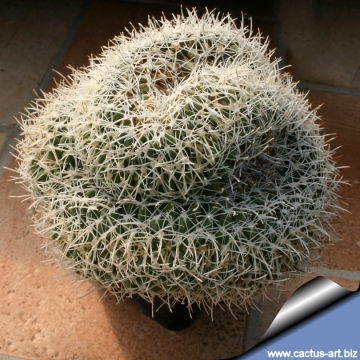 Sclerocactus glaucus f. cristata Photo by: Cactus Art
Sclerocactus glaucus f. cristata Photo by: Cactus Art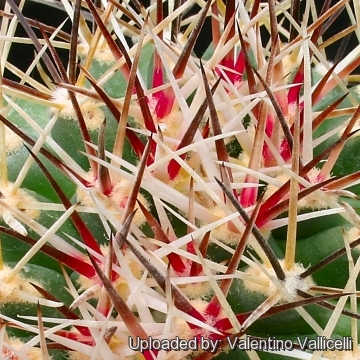 Sclerocactus glaucus f. cristata Photo by: Valentino Vallicelli
Sclerocactus glaucus f. cristata Photo by: Valentino Vallicelli Sclerocactus glaucus f. cristata Photo by: Cactus Art
Sclerocactus glaucus f. cristata Photo by: Cactus Art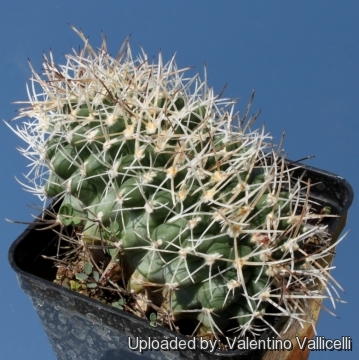 Sclerocactus glaucus f. cristata Photo by: Valentino Vallicelli
Sclerocactus glaucus f. cristata Photo by: Valentino Vallicelli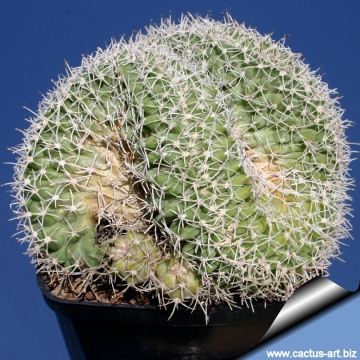 Sclerocactus glaucus f. cristata Photo by: Cactus Art
Sclerocactus glaucus f. cristata Photo by: Cactus Art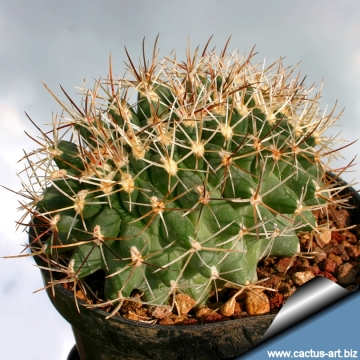 Sclerocactus glaucus f. cristata Photo by: Cactus Art
Sclerocactus glaucus f. cristata Photo by: Cactus Art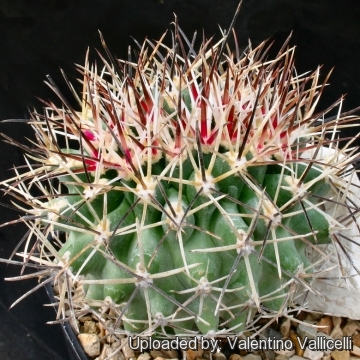 Sclerocactus glaucus f. cristata Photo by: Valentino Vallicelli
Sclerocactus glaucus f. cristata Photo by: Valentino Vallicelli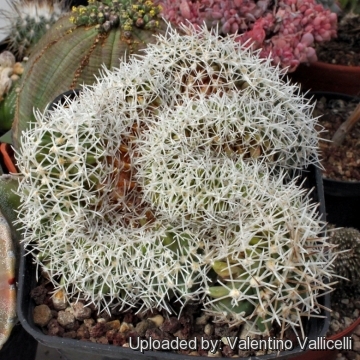 Sclerocactus glaucus f. cristata Photo by: Valentino Vallicelli
Sclerocactus glaucus f. cristata Photo by: Valentino VallicelliCultivation and Propagation: It is a relatively easy plant to grow, both grafted or on its own roots. During the summer it is best to keep the plants outside, where the temperature can rise to over 30 C with no harm to the plant. Furnish good drainage and use a an open and free draining mineral compost that allows therefore roots to breath. They should be kept almost completely dry during the winter months. From March onwards the plant will begin to grow, and watering should be increased gradually until late May, when the plant should be in full growth.
Water regularly during the summer, so long as the plant pot is allowed to drain and not sit in a tray of water. During hot weather you may need to water the plants more frequently, as long as the plant is actively growing. From late September watering should be reduced, to force the plant to go into a state of semi-dormancy. By October you should be back in to the winter watering regime.
It needs full sun, avoiding only the harshest summer sun. If kept too dark, plants may become overly lush and greener, and could be prone to rot, due to over-watering.
Feeding may not be necessary at all if the compost is fresh. Then feed in summer only if the plant hasn't been repotted recently. Do not feed the plants from September onwards, as this can cause lush growth, which can be fatal during the darker cold months. Grown specimens resist to -20°C for a short time.
Propagation: By vegetative propagation grafting or stem cuttings from adult plants.
Your Photos
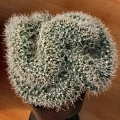
by Valentino Vallicelli




















